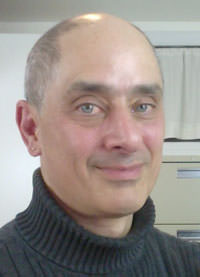ArchiCAD's Tracker facilitates on-screen, on the fly entry of coordinates and dimensions. This 24 minute ArchiCAD tutorial video starts with the basics then demonstrates and explains cool time-saving tricks and methods used by ArchiCAD experts.
TIPS: If the video appears fuzzy, click the gear icon and choose HD; you can also switch to full-screen.
NEW: Try adjusting the speed control to go through the video faster - I use this all the time.
TRACKER DISPLAY
In the default Work Environment settings, the Tracker automatically appears after you make the first click in a multi-click process. It displays your current cursor position relative to the Edit Origin, which is usually the previous click-point. In some cases this can be relative to the other end (or an adjacent node point) of an element you are editing.
When you draw a single wall or line (or a series of walls or lines), the Tracker will show the length and orientation of the element. When you draw a rectangle (of walls, lines, slab, roof, etc.) the Tracker will show two linear dimensions.
When you move an element or a set of elements, the Tracker shows the offset from the original point (i.e. how far you are moving it).
Except for preliminary sketch design, it is not advisable to rely on Tracker values when drawing with the mouse. The displayed accuracy is based on a combination of your current zoom factor and Working Units (which can be set in the Options menu > Project Preferences). For example, if your working units are set for 1/4”, then the Tracker will round dimensions to the nearest 1/4” and your potential error can be as much as 1/8”; this can cause issues in dimension strings later on.
To hide or show the Tracker click the Tracker button in the Toolbar. Hiding the Tracker may be helpful during annotation when precise distances or sizes are unnecessary.
To show the Tracker ALL the time, use the Options menu > Work Environment > Tracker and Coordinate Input > Show Tracker > Always. You can change this back to the default at any time.
TRACKER INPUT
Any time you can click the mouse to indicate a position or dimension, you can hit the Enter key instead of clicking the mouse. This allows you to carefully position the mouse, then use the keyboard to confirm the location. This may be helpful if your hand isn’t totally steady, and you find that sometimes the mouse position jumps as you click.
Alternatively, you can enter information into the Tracker to specify a precise dimension, then click Enter to confirm and essentially “click” at the computed location.
The Tracker always has a highlighted input field displayed in bold text. Simply type in a numeric value, and it will be entered into that field. Hit the Enter key on the keyboard to complete the operation.
For rectangular dimensions, one field will be highlighted. Type in...
NOTE: I've written up a 5 page PDF as a quick reference guide to the ArchiCAD Tracker, which I'd love to send you. Simply click the button below and tell me where to send it, and you'll have it in your inbox within a few minutes.
For the complete story, get my FREE
"ARCHICAD Tracker Cheat Sheet"

This 5 page quick reference PDF will help you get the most out of ARCHICAD's powerful Tracker. Speed up your work while being more precise!
To get your copy, click this button and tell me where to send it:

Hi Eric,
I can’t seem to get this working in Archicad 26 🙁 It keeps moving the whole object.
Regards,
Barry
Hi Barry – When you’re editing elements in Archicad, the pet palette gives you multiple options when you click on a node point or edge. For certain elements, you can choose between moving the entire element, or just editing the node or edge or subelement (repositioning or stretching). Can you clarify what exactly you are trying to do – with what type of element, where you are clicking, and what steps you are doing? That way I may be able to help you a bit further.